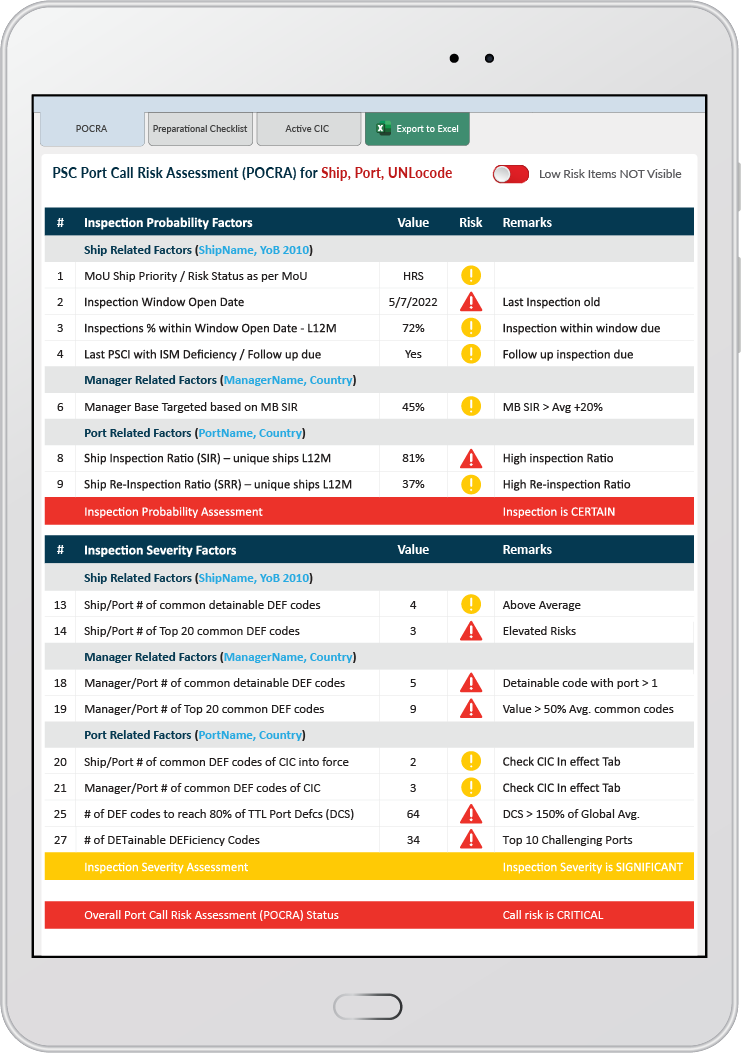
About Port Call Risk Assessment (POCRA)
POCRA is a 1-click intelligence tool analyzing a number of 35 parameters affecting Ship, manager and Port in order to deliver actionable result incorporating
- Probability of a PSCI (NOT Expected, MAY be expected or SHOULD be expected)
- Severity of the potential PSCI (NOT Challenging, Challenging and MOST Challenging)
- Overall Risk Level of the PSCI (Low, elevated, High)
- PSCI Risk Level (PRL) (from 1 to 9, assigning a unique status to the PSCI) – You may review PRL here
- List of CiC/FiC applicable to port with details
- PSC Preparation Checklist output in XLS Format, ready to use
Verify the resilience of our Intelligence with a click getting real life data on the above fields!

PSC Intelligence
Powered by PSC Inspections
We host the largest and most comprehensive PSC intelligence database, going beyond just PSCIs and deficiencies. Our platform offers deep insights into actual inspections, from calculating PSCI windows for every port call to generating tailored checklists for specific ports, ships, and managers—ensuring everything is prepared efficiently and effectively.

PSC KPIs
Explore DPI, DER & KPIs vs Ship Age on specific Ports
Challenging Ports
Take a deep dive into the most challenging ports
POCRA
Get POCRA for your Ship @ next port of Call with Real Data
Best Performers
Find the top performers on each fleet segment
PSC WiKi
Explore & learn from the latest PSC Procedures
